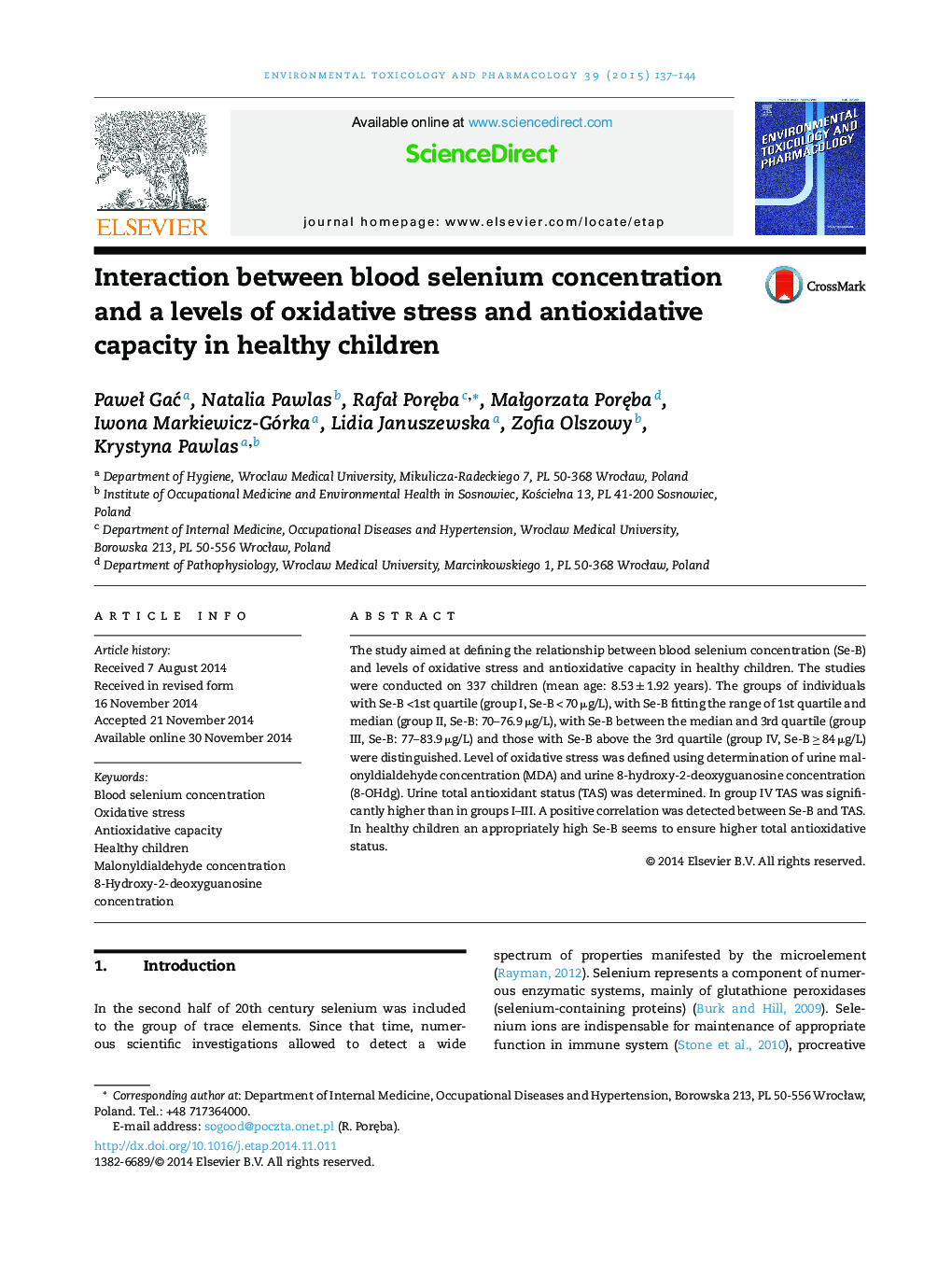| Article ID | Journal | Published Year | Pages | File Type |
|---|---|---|---|---|
| 2583274 | Environmental Toxicology and Pharmacology | 2015 | 8 Pages |
•In group with Se-B ≥ 84 μg/L TAS was higher than in groups with Se-B < 84 μg/L.•Positive correlation was detected between Se-B and TAS.•Appropriately high Se-B seems to ensure higher total antioxidative status.
The study aimed at defining the relationship between blood selenium concentration (Se-B) and levels of oxidative stress and antioxidative capacity in healthy children. The studies were conducted on 337 children (mean age: 8.53 ± 1.92 years). The groups of individuals with Se-B <1st quartile (group I, Se-B < 70 μg/L), with Se-B fitting the range of 1st quartile and median (group II, Se-B: 70–76.9 μg/L), with Se-B between the median and 3rd quartile (group III, Se-B: 77–83.9 μg/L) and those with Se-B above the 3rd quartile (group IV, Se-B ≥ 84 μg/L) were distinguished. Level of oxidative stress was defined using determination of urine malonyldialdehyde concentration (MDA) and urine 8-hydroxy-2-deoxyguanosine concentration (8-OHdg). Urine total antioxidant status (TAS) was determined. In group IV TAS was significantly higher than in groups I–III. A positive correlation was detected between Se-B and TAS. In healthy children an appropriately high Se-B seems to ensure higher total antioxidative status.
